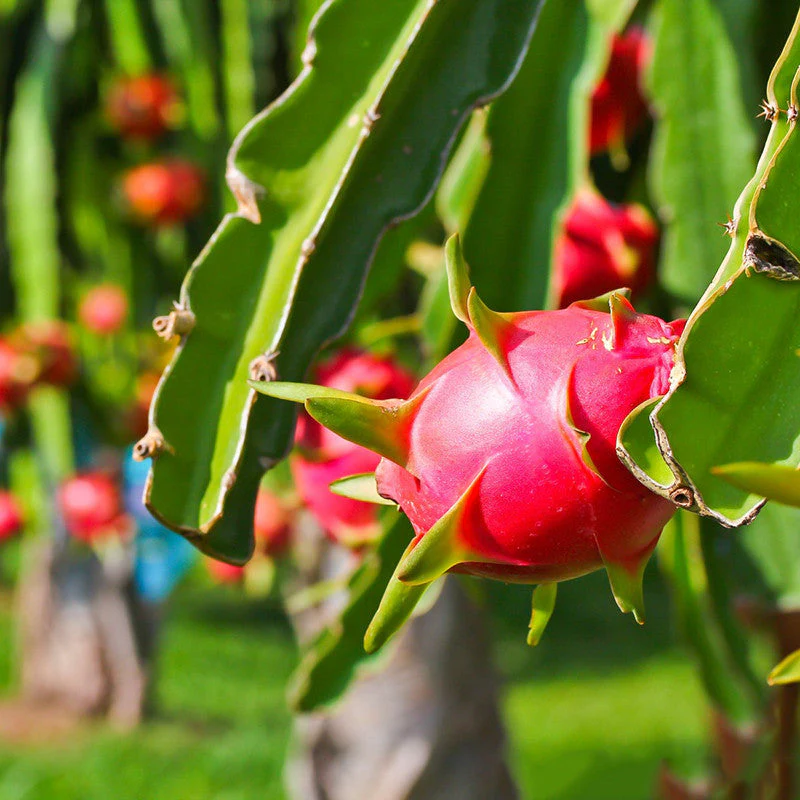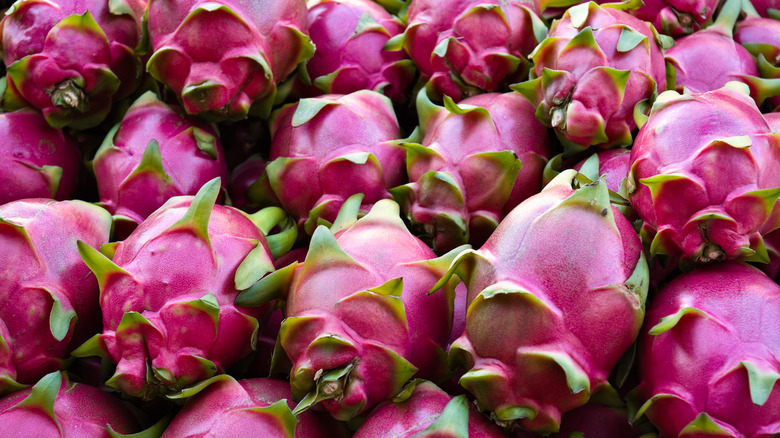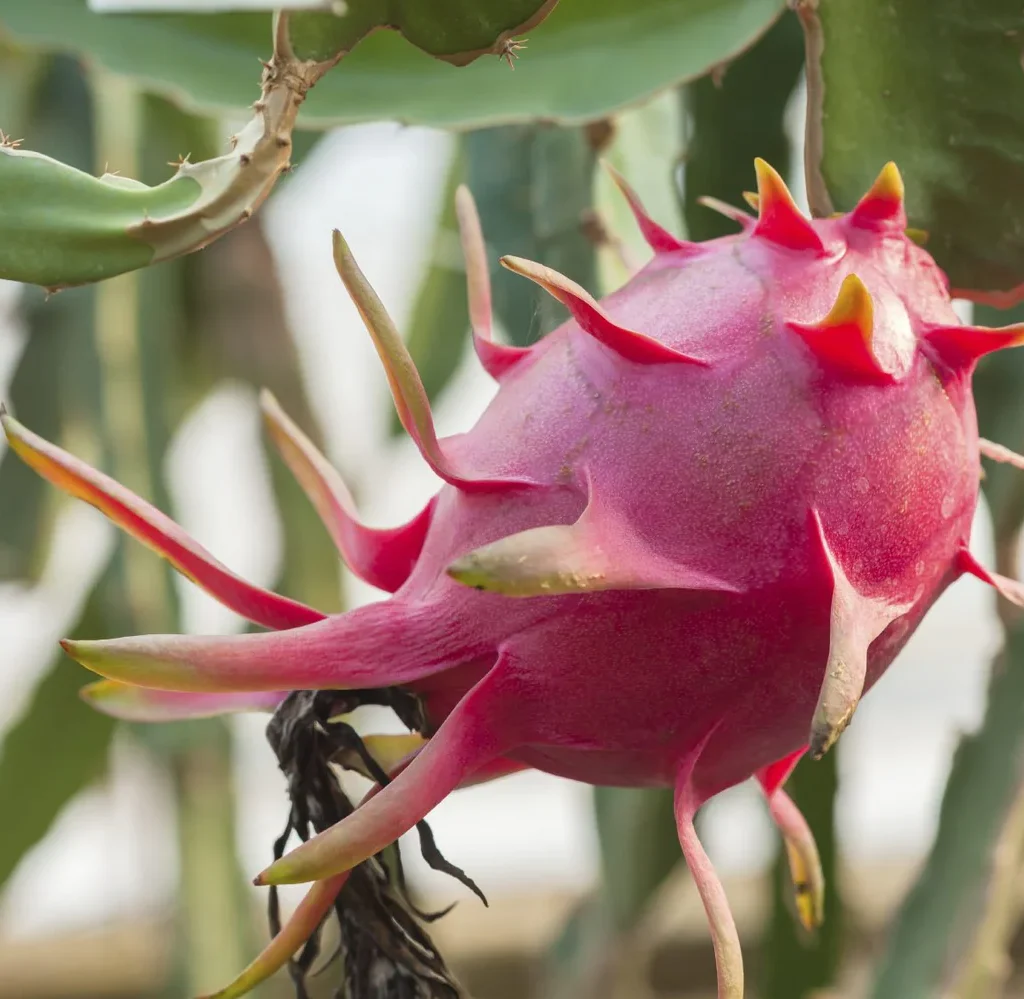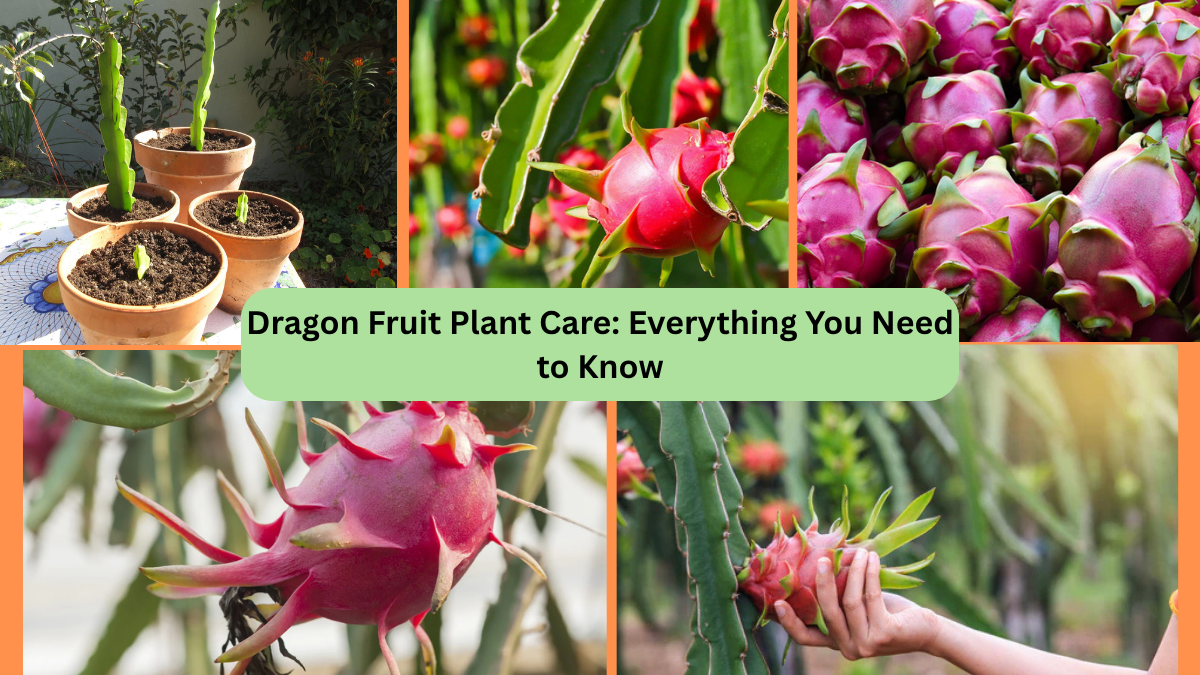Dragon fruit, with its exotic appearance and nutrient-packed flesh, has captivated gardeners and health enthusiasts alike. Known scientifically as Hylocereus spp., this fast-growing, climbing cactus is native to Central and South America but is now cultivated worldwide in tropical and subtropical climates. Its stunning night-blooming flowers, unique cacti stems, and vibrant fruits make it a favorite for both outdoor and indoor growers.
If you’ve ever wanted to add this eye-catching and productive plant to your home garden, this complete guide to dragon fruit plant care will give you everything you need to know—from soil and watering needs to pruning, fertilizing, and harvesting.
Introduction to Dragon Fruit

Dragon fruit, also called pitaya or strawberry pear, belongs to the Cactaceae family. Unlike most desert cacti, it’s a climbing species, requiring support as it grows. It thrives in warm, sunny environments and can live for decades, producing both ornamental flowers and delicious fruits.
The fruit’s skin ranges from vivid pink to yellow, with inner flesh that may be white, red, or purple, dotted with tiny edible seeds. Dragon fruit is packed with:
- Vitamin C
- Fiber
- Antioxidants
- Calcium and magnesium
Its versatility, aesthetic appeal, and health benefits make it a favorite among both home gardeners and commercial growers.
Popular Dragon Fruit Varieties
Before planting, it’s useful to know the main dragon fruit types:
- Hylocereus undatus
- Pink skin, white flesh
- Mildly sweet flavor
- Most commonly grown
- Hylocereus costaricensis
- Pink skin, red or magenta flesh
- Richer flavor
- Highly ornamental
- Hylocereus megalanthus
- Yellow skin, white flesh
- Very sweet
- More delicate plant
Each variety has slightly different care needs, but general guidelines apply across all.
Ideal Growing Conditions

Light
Dragon fruit requires 6–8 hours of full sun daily.
In very hot climates, some afternoon shade prevents sunburn on tender stems.
Indoors: Place near a south-facing window or supplement with a grow light for 10–12 hours per day.
Temperature
This tropical cactus thrives in warm conditions:
- Optimal: 65–85°F (18–29°C)
- Minimum survival: 40°F (5°C)
- Protect from frost — move containers indoors or cover outdoor plants during cold spells.
Soil
Well-draining soil is essential to prevent root rot.
Best soil mix:
- 40% cactus or succulent mix
- 30% compost
- 20% coarse sand or perlite
- 10% small gravel or pumice
Ideal pH: 6.0–7.0 (slightly acidic to neutral)
Container Tips
If space is limited, dragon fruit thrives in containers:
- Minimum pot size: 10–15 gallons for mature plants
- Use a heavy, sturdy container with drainage holes
- Provide a strong support post or trellis
Watering Guide

Dragon fruit prefers consistent moisture during its active growing season but cannot tolerate soggy soil.
Watering schedule:
- Spring–Summer: Water deeply when the top 1–2 inches of soil are dry.
- Fall–Winter: Reduce watering; allow soil to dry more between waterings.
- Avoid overhead watering to prevent fungal diseases.
Tip: Never let the plant sit in waterlogged soil. Proper drainage is crucial.
Fertilizing Dragon Fruit
For healthy growth and abundant fruiting, regular feeding is recommended.
Fertilizer options:
- Balanced NPK (10-10-10 or 20-20-20) for general growth
- Organic alternatives: compost tea, fish emulsion, or seaweed extract
Fertilizing schedule:
- Every 4–6 weeks during the growing season (spring to early fall)
- Reduce or stop feeding in winter when the plant goes semi-dormant
Pruning and Maintenance

Dragon fruit cacti grow rapidly and can become messy without regular pruning.
Why prune?
- Encourages strong, upright growth
- Improves air circulation
- Prevents overcrowding
- Increases flowering and fruiting potential
When to prune:
After fruit harvest or at the end of the growing season.
How to prune:
- Remove dead, diseased, or overcrowded stems.
- Trim excessive side shoots.
- Cut back long stems to maintain shape and support.
Use sterilized pruning shears to prevent disease spread.
Supporting Dragon Fruit Plants
As a climbing cactus, dragon fruit needs strong support:
- Install a concrete, wooden, or PVC post with a crosspiece at the top.
- Use soft ties to secure branches.
- Cages and trellises work well for container-grown plants.
Proper support ensures even growth and makes harvesting easier.
Flowering and Pollination

Dragon fruit flowers are large, fragrant, and bloom at night. Most varieties bloom from late spring to early summer.
Pollination:
- Some varieties are self-pollinating, while others need cross-pollination.
- If necessary, hand-pollinate using a soft brush to transfer pollen between flowers.
- Successful pollination leads to fruit development within 30–50 days.
Tip: Flowers last only one night — be ready to pollinate when they open.
Harvesting Dragon Fruit
Fruits ripen about 30–50 days after flowering.
When to harvest:
- Skin color changes to bright pink, yellow, or red.
- Fruit gives slightly when pressed.
- Scales at the base begin to wither.
How to harvest:
Use garden shears or a sharp knife to cut the fruit off the stem.
Storage:
- Keep ripe fruit in the refrigerator for up to one week.
- For longer storage, freeze the flesh in cubes.
Common Problems and Pests
Pests:
- Mealybugs
- Aphids
- Spider mites
Control: Use neem oil or insecticidal soap.
Diseases:
- Root rot (from overwatering)
- Anthracnose (fungal leaf spot)
- Stem rot in humid conditions
Prevention: Ensure good air circulation, avoid overwatering, and prune regularly.
Propagating Dragon Fruit
The easiest way to propagate dragon fruit is through stem cuttings.
Steps:
- Cut a healthy, 12–15 inch section.
- Allow the cut end to dry for 2–3 days.
- Plant in well-draining soil.
- Water lightly.
- Roots develop in 2–4 weeks.
Tip: Avoid propagating during cold months.
Dragon Fruit Plant Care Calendar
| Season | Care Tasks |
|---|---|
| Spring | Resume regular watering, fertilize monthly, prune |
| Summer | Hand-pollinate flowers, harvest fruit, water often |
| Fall | Reduce watering, light fertilizing, prune if needed |
| Winter | Minimal watering, no fertilizer, protect from cold |
Conclusion
Dragon fruit is an ideal plant for gardeners seeking an exotic, easy-care, and productive addition to their collection. With its striking flowers, vibrant fruit, and hardy nature, it’s a rewarding choice for both outdoor and indoor cultivation.
By providing the right light, soil, water, and support, and managing pests and pruning thoughtfully, you can enjoy years of beautiful blooms and delicious, antioxidant-rich fruits from your own homegrown dragon fruit plant.



